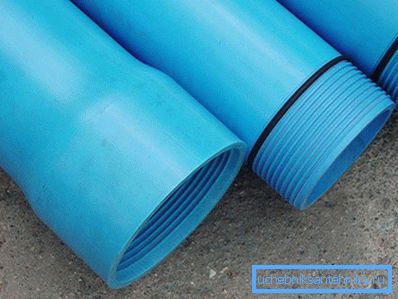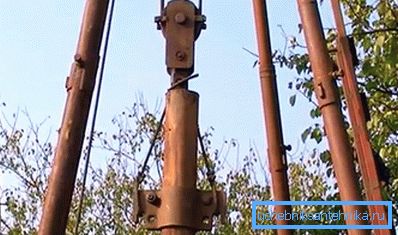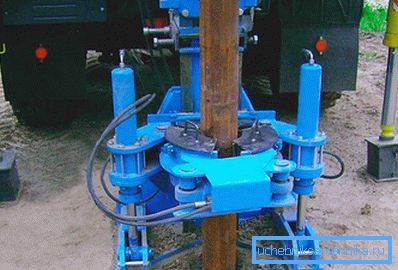Casing extraction from wells
When working on the installation and maintenance of water supply systems, it is often necessary to solve quite complex issues. So, for example, when it comes to dismantling old pipes, you can experience certain difficulties. In particular, the extraction of casing pipes from wells is a very difficult task for independent implementation, since it requires not only the use of special mechanisms, but also very specific knowledge. About what are the nuances of the above process, as well as about what the main stages of work are concluded and will be discussed below.
general description

To begin with, it is worthwhile to say a few words about what the casing is and what their purpose is, since the features of the upcoming actions will largely depend on this. Casing pipes are designed to strengthen the surface of the well against possible sprinkling resulting from soil movements. Most often, these elements of the plumbing system are made of corrosion-resistant metals. The pipes themselves may have a different diameter and length, and the conditions for their production are strictly regulated by regulatory documents.
If necessary?

Before starting work on the extraction of casing pipes from a well, it is necessary to know that the majority of specialists do not recommend carrying out these works at all. What plays a role here is that the process of dismantling is associated with a considerable load on the pipes themselves, and therefore it is very likely that they will not be suitable for further use. In addition, the work requires the use of special tools and equipment.
Usually, the question of removing the casing from the well occurs when there are problems with the water supply. This may be the destruction of the pipe due to corrosion, and the tightening of the well with sludge or sand, and a significant deformation of the pipe as a result of the displacement of the soil, and there is little else. In any case, if you think a little, it becomes clear that it is easier to equip a new well than to change old pipes into an existing one.
Pipe extraction
If, nevertheless, the decision about the need to extract pipes is made, then you need to know that there are several options for the implementation of works, and each of them should be considered separately.
Pulling

One of the main ways to perform these jobs is to draw out old pipes from the well. Works are performed as follows:
- First you need to prepare the place of the upcoming work. It is necessary to remove everything that can interfere with the workers, as well as to provide free access for vehicles. In addition, around the upper part of the pipe you need to dig a small recess, which will come in handy later. In most cases, about 50–70 cm will suffice.
- Next, a special nozzle is attached to the upper part of the pipe - a clamp to which the cables cling.
- After that, with the help of a crane, the pipe is pulled out a little, and the clamp moves slightly below, after which the procedure is repeated. Such a gradual stretch is necessary because during work there will inevitably arise friction between the outer walls of the pipe and the surface of the well, and if you pull the pipe only at the top, there is a high risk that it will burst.
You can add that this option can be used for all cases, but it is best to use it for thick-walled large diameter pipes.
Loosening

Another option for doing work is the so-called loosening. In principle, in many ways the process is similar to that described above, but it has certain nuances. Namely:
- For performance of work it is possible not to use the crane, but to do with a winch and stops.
- The variant is well suited for cases where the pipe has a small diameter.
- To some extent, the process of doing work is simpler than the one described above.
As for the process of performing the work, their essence lies in the softening of the soil with water around the pipe. As a result of these actions, the soil softens well and loosens the pipe a little, and then pulls it out. The clamp, as in the previous case, must be moved every 30-50 cm.
Twisting

Unscrewing can be mentioned as another way to extract pipes from a well. The point is that if there is a special technique available that is equipped with a drill, then the pipe joins it. In this case, the tension and rotation are combined. As a result, the work is simplified, and the risk of pipe rupture is somewhat reduced. If you decide to apply this method you need to know what needs to be carefully controlled, such as the force of rotation, as well as the tension.
Tip! If the pipe fails to turn, it is better to leave such a venture. It is easier to break a pipe tight in the ground than to turn it.
In conclusion, you can add that, in principle, you can choose any method of pipe extraction, depending on qualification and the presence / absence of equipment. The main thing is to be careful and all safety regulations. However, as mentioned above, if it is possible to leave the pipes, it is more profitable not to remove them, but simply to make a new well.
Video
This video shows how to lift the casing:
This tells you which pipe cannot be used as a casing for a well: